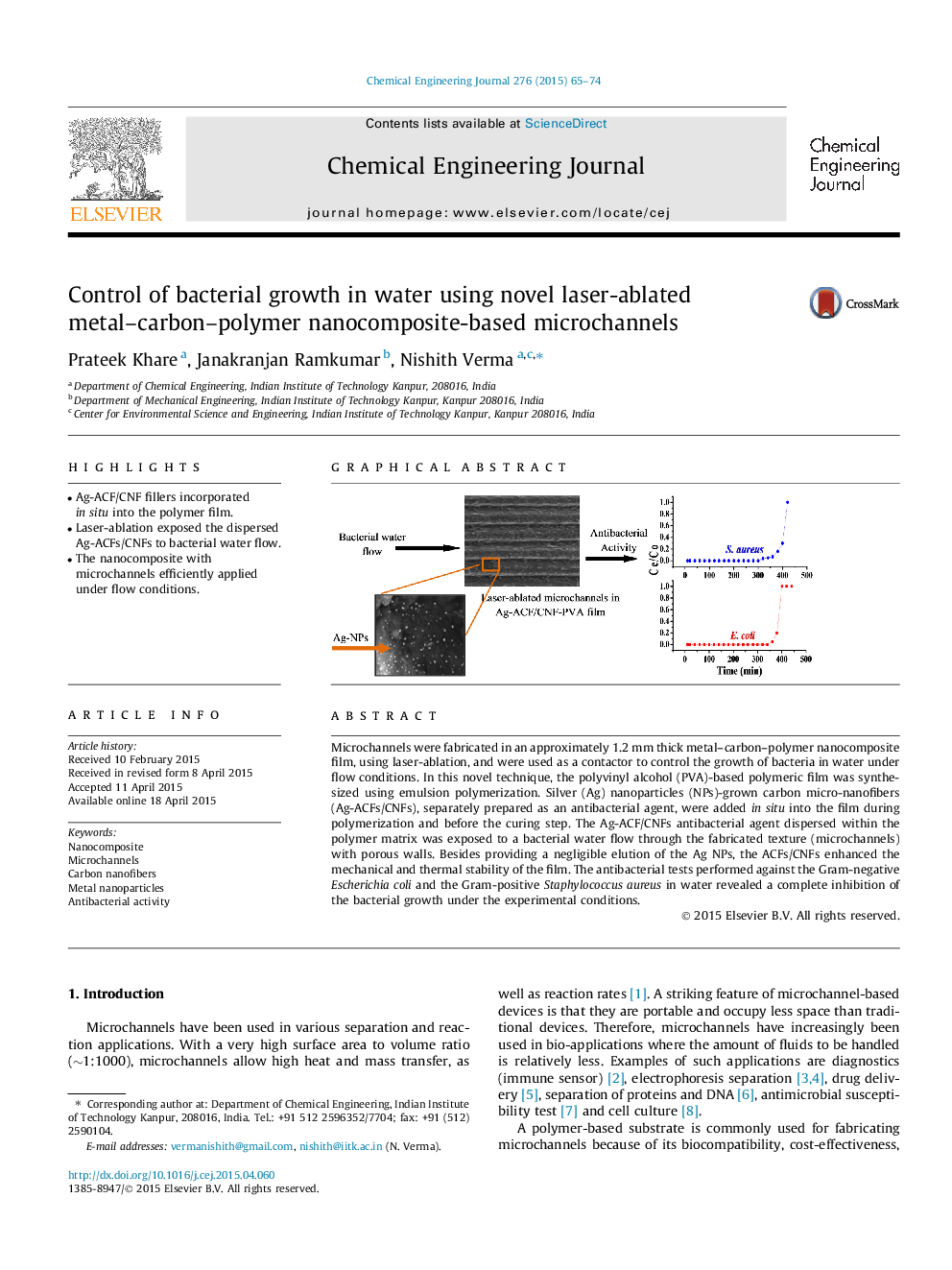| Article ID | Journal | Published Year | Pages | File Type |
|---|---|---|---|---|
| 146216 | Chemical Engineering Journal | 2015 | 10 Pages |
•Ag-ACF/CNF fillers incorporated in situ into the polymer film.•Laser-ablation exposed the dispersed Ag-ACFs/CNFs to bacterial water flow.•The nanocomposite with microchannels efficiently applied under flow conditions.
Microchannels were fabricated in an approximately 1.2 mm thick metal–carbon–polymer nanocomposite film, using laser-ablation, and were used as a contactor to control the growth of bacteria in water under flow conditions. In this novel technique, the polyvinyl alcohol (PVA)-based polymeric film was synthesized using emulsion polymerization. Silver (Ag) nanoparticles (NPs)-grown carbon micro-nanofibers (Ag-ACFs/CNFs), separately prepared as an antibacterial agent, were added in situ into the film during polymerization and before the curing step. The Ag-ACF/CNFs antibacterial agent dispersed within the polymer matrix was exposed to a bacterial water flow through the fabricated texture (microchannels) with porous walls. Besides providing a negligible elution of the Ag NPs, the ACFs/CNFs enhanced the mechanical and thermal stability of the film. The antibacterial tests performed against the Gram-negative Escherichia coli and the Gram-positive Staphylococcus aureus in water revealed a complete inhibition of the bacterial growth under the experimental conditions.
Graphical abstractFigure optionsDownload full-size imageDownload as PowerPoint slide
